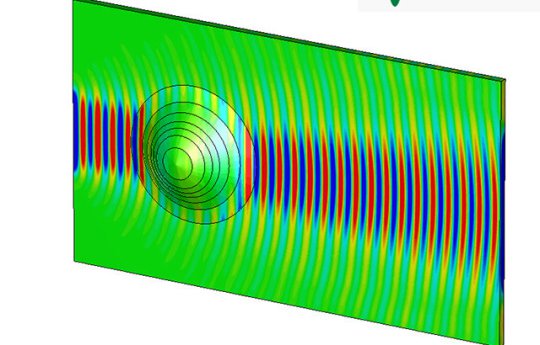Scientists from the QMUL’s School of Computer Science and Electronic Engineering, who have worked with the UK industry to validate for the very first time a practical cloaking gadget that allows curved surfaces to seem smooth to electromagnetic waves.
While the experiment might not result in the invisibility cloak showcased popular in J.K Rowling’s Harry Potter novels quite yet, this is a practical illustration that could lead to a step-transformation in how antennas in distinct sizes and shapes to be linked to unique places and extensive types of materials.

The co-author, Professor Yang Hao from the QMUL’s School of Computer Science and Electronic Engineering, says “Our designs are crafted by transformation optics, which is an idea behind the idea of an invisibility cloak. Past experiments have revealed that this method functions at a single frequency. However, we can illustrate that it functions at a better speed of frequencies making it highly useful for distinct engineering applications, like aerospace and nano-industry.”
The scientists coated a curved layer with a nano composite material, with seven different layers, known as graded index nano composite, where the electrical property of every layer varies according to the position. The effects would be ‘cloak’ the object, like structure that can hide an object that would ordinarily be causing the waves to scatter.
The underlying technique has many extensive applications, spanning from optics to microwave for the regulation of any surface electromagnetic waves. The very first author, Dr. Luigi Spada, who also belongs from the QMUL’s School of Computer Science and Electronic Engineering says, “The study and analysis of surface waves are the central points to develop industrial and technological solutions in the creation of virtual platforms, for distinct application niches.
“We illustrated a practical possibility to utilize Nano composites to regulate surface wave propagation through technologically advanced stabilizing manufacturing. In fact, most importantly, the technique is useful for other physical procedures that are demonstrated through wave equations, like acoustics. For this reason, it is considered that such work has an excellent industrial impact.”
Conclusion – While truly, it is an excellent research work that has resulted in lucrative outcomes that are useful to serve numerous applications. The results from the experiments are expected to be useful for serving multiple rigid applications. It is the result of the years of hard efforts of the researchers and their team. It is an extremely close step towards preparing an invisibility cloak, and hence, scientists are planning other future experiments to avail more similar results that could lead to the better serving of varying rigid applications.
Filed Under: News


Questions related to this article?
👉Ask and discuss on EDAboard.com and Electro-Tech-Online.com forums.
Tell Us What You Think!!
You must be logged in to post a comment.